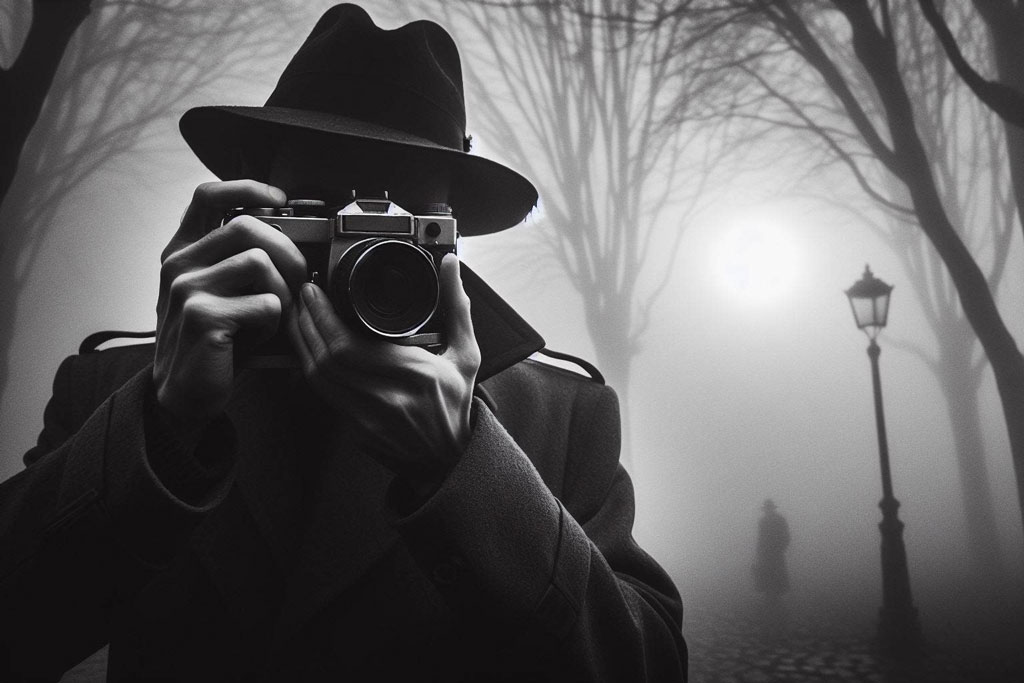Photography is a medium that allows us to freeze moments in time, capturing the world from unique perspectives. One of the key elements that can significantly enhance the visual impact of a photograph is the vantage point from which it is taken. The vantage point, or the position from which the photographer views and captures a scene, plays a crucial role in shaping the composition, perspective, and overall storytelling of an image. In this article, we delve into the art of vantage point in photography, exploring its importance, techniques, and creative possibilities.
Table of Contents
Understanding Vantage Point
At its core, the vantage point refers to the physical location and height from which a photograph is taken. It determines the angle, depth, and visual dynamics of an image, offering viewers a glimpse into the photographer’s unique perspective. Whether shooting from ground level, eye level, or an elevated position, each vantage point offers distinct advantages and can evoke different emotional responses from the audience.
Eye-Level Vantage Point
The most common vantage point in photography is the eye-level perspective, where the camera is positioned parallel to the subject’s eye level. This viewpoint often provides a sense of familiarity and immediacy, as it mirrors the natural way we perceive the world. When shooting at eye level, photographers can establish a strong connection between the viewer and the subject, allowing for intimate portraits or candid street photography.
Ground-Level Vantage Point
Shooting from a ground-level vantage point offers a unique and often dramatic perspective, especially when capturing subjects close to the camera. By lowering the camera to the ground, photographers can emphasize textures, patterns, and details that might otherwise go unnoticed. This technique is particularly effective in macro photography, where tiny subjects are magnified to reveal intricate beauty.
Elevated Vantage Point
Conversely, an elevated vantage point provides a bird’s-eye view of the scene, offering a broader perspective and a sense of grandeur. Whether shooting from a rooftop, hilltop, or aerial vantage point, photographers can capture sweeping landscapes, bustling cityscapes, or sprawling vistas with captivating clarity. This elevated perspective can highlight patterns, symmetry, and spatial relationships that are invisible from ground level, creating visually striking compositions.
Creative Applications of Vantage Point
Mastering the art of vantage point opens up a world of creative possibilities for photographers. By experimenting with different perspectives, angles, and heights, photographers can transform ordinary scenes into extraordinary works of art. Here are some creative applications of vantage point in photography:
1. Perspective Distortion:
Changing the vantage point can distort the perspective of a scene, creating visually dynamic images that challenge the viewer’s perception. By shooting from a low angle, photographers can exaggerate the size and prominence of foreground elements, making them appear larger than life. Conversely, shooting from a high angle can compress the perspective, flattening the scene and emphasizing patterns or leading lines.
2. Emphasizing Scale and Proportion:
Vantage point plays a crucial role in conveying the scale and proportion of subjects within a frame. By juxtaposing different elements at varying distances from the camera, photographers can create a sense of depth and dimensionality. Shooting from a low angle can make towering structures appear even more imposing, while shooting from a high angle can diminish their size, highlighting the vastness of the surrounding landscape.
3. Environmental Storytelling:
The vantage point can also serve as a powerful storytelling tool, providing viewers with insights into the environment and context surrounding the subject. By choosing a strategic vantage point, photographers can incorporate elements of the surrounding landscape or architecture to enhance the narrative of their images. Whether capturing the hustle and bustle of a crowded marketplace from above or showcasing the solitude of a lone figure against a vast expanse of wilderness, the vantage point can convey emotion, atmosphere, and cultural significance.
Exploring Alternative Vantage Points
In part one of this article, we delved into the significance of vantage point in photography and explored traditional perspectives such as eye-level, ground-level, and elevated vantage points. Now, let’s venture further into the realm of creative exploration by exploring alternative vantage points that can add depth, intrigue, and novelty to your photographic compositions.
1. Overhead Vantage Point:
While elevated vantage points such as rooftops or hills offer sweeping views from above, there’s another overhead perspective worth exploring – the use of drones. Drones equipped with cameras allow photographers to capture aerial images from perspectives that were once inaccessible or prohibitively expensive. Whether hovering high above a city skyline, tracing the curves of a winding river, or exploring intricate patterns in natural landscapes, drone photography offers limitless possibilities for creativity and exploration.
2. Underwater Vantage Point:
For photographers with a penchant for adventure, the underwater vantage point presents a captivating realm waiting to be explored. Whether snorkeling, scuba diving, or utilizing waterproof camera housings, underwater photography offers a unique perspective on the world beneath the surface. From colorful coral reefs teeming with marine life to serene underwater landscapes bathed in ethereal light, the underwater vantage point unlocks a world of beauty, mystery, and wonder waiting to be captured through the lens.
3. Point-of-View (POV) Vantage Point:
In recent years, the rise of wearable cameras and action cams has popularized the point-of-view (POV) vantage point, allowing photographers to capture immersive, first-person perspectives of their experiences. Whether attached to helmets, chest mounts, or handheld gimbals, POV cameras offer a dynamic and engaging way to document adventures, sports, and everyday moments from the photographer’s perspective. This intimate viewpoint provides viewers with a sense of immediacy and involvement, inviting them to experience the world through the photographer’s eyes.
4. Abstract Vantage Point:
Sometimes, the most compelling images emerge from unconventional vantage points that challenge our perceptions of reality. Abstract photography embraces ambiguity, distortion, and experimentation, inviting viewers to interpret images through subjective lenses. By exploring unconventional angles, reflections, and compositions, photographers can create visually striking images that transcend traditional notions of perspective and representation. Whether capturing fragmented reflections in puddles, distorted perspectives through glass, or surreal compositions of everyday objects, abstract photography encourages viewers to see the world in new and unexpected ways.
5. Microscopic Vantage Point:
At the opposite end of the scale, the microscopic vantage point offers a fascinating glimpse into the hidden world of the unseen. Through the lens of a microscope, photographers can explore the intricate beauty of microscopic organisms, crystals, and textures that exist beyond the naked eye’s perception. From the delicate patterns of snowflakes to the intricate structures of cells and tissues, microscopic photography reveals a universe of detail and complexity waiting to be discovered and documented.
Unleashing Your Creativity
As photographers, embracing alternative vantage points opens up a world of creative possibilities, allowing us to transcend conventional perspectives and explore new realms of visual expression. Whether soaring through the skies with a drone, plunging into the depths of the ocean, or documenting everyday moments from a first-person perspective, the art of vantage point offers endless opportunities for exploration, experimentation, and storytelling. So, grab your camera, step outside your comfort zone, and dare to see the world from a different point of view.
Mastering the art of vantage point is essential for photographers seeking to elevate their craft and create visually compelling images. By understanding the impact of perspective, angle, and height on composition and storytelling, photographers can unleash their creativity and capture the world from unique and captivating viewpoints. Whether shooting from eye level, ground level, or an elevated position, the vantage point offers endless opportunities for exploration and expression in photography.



